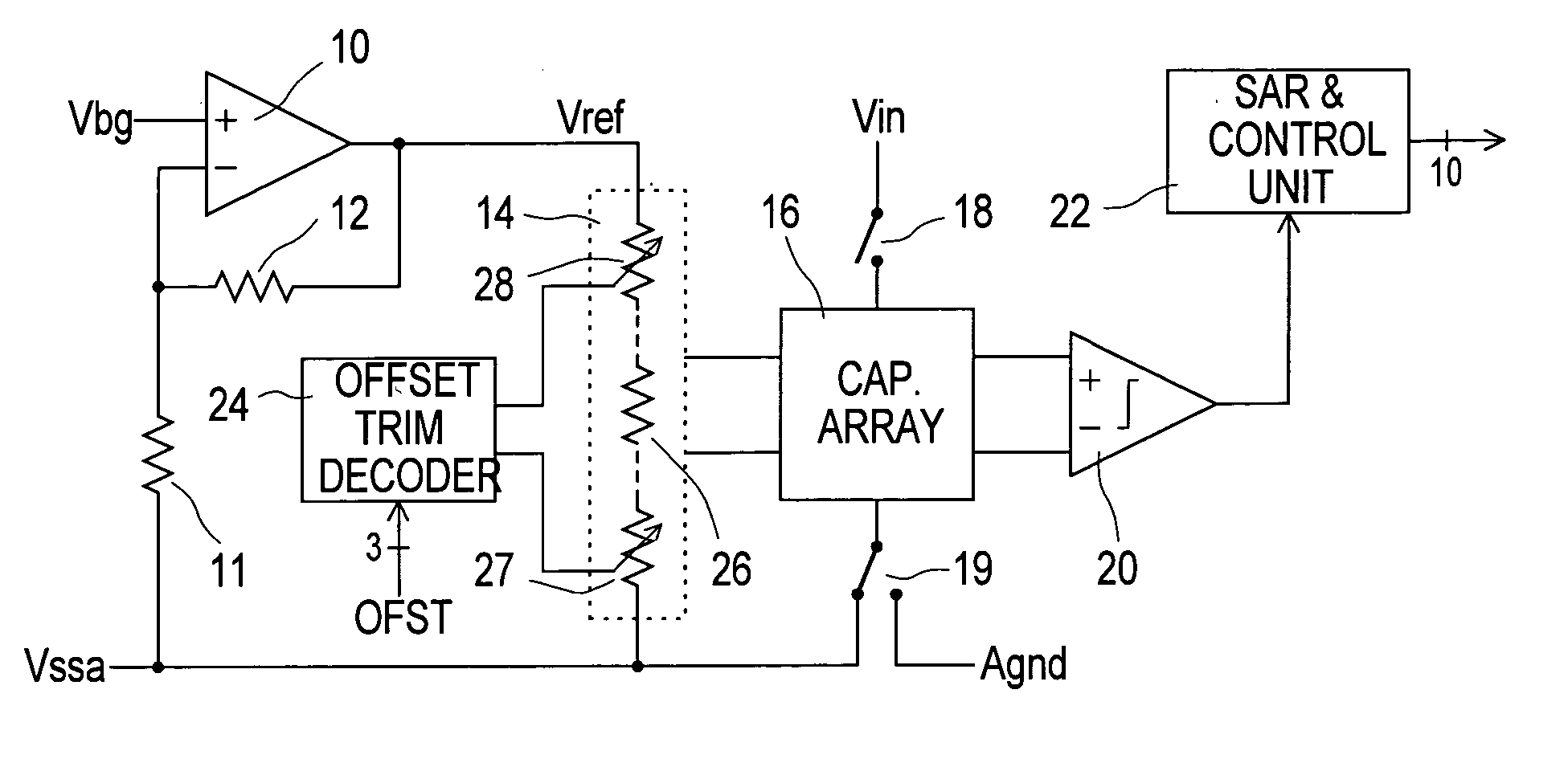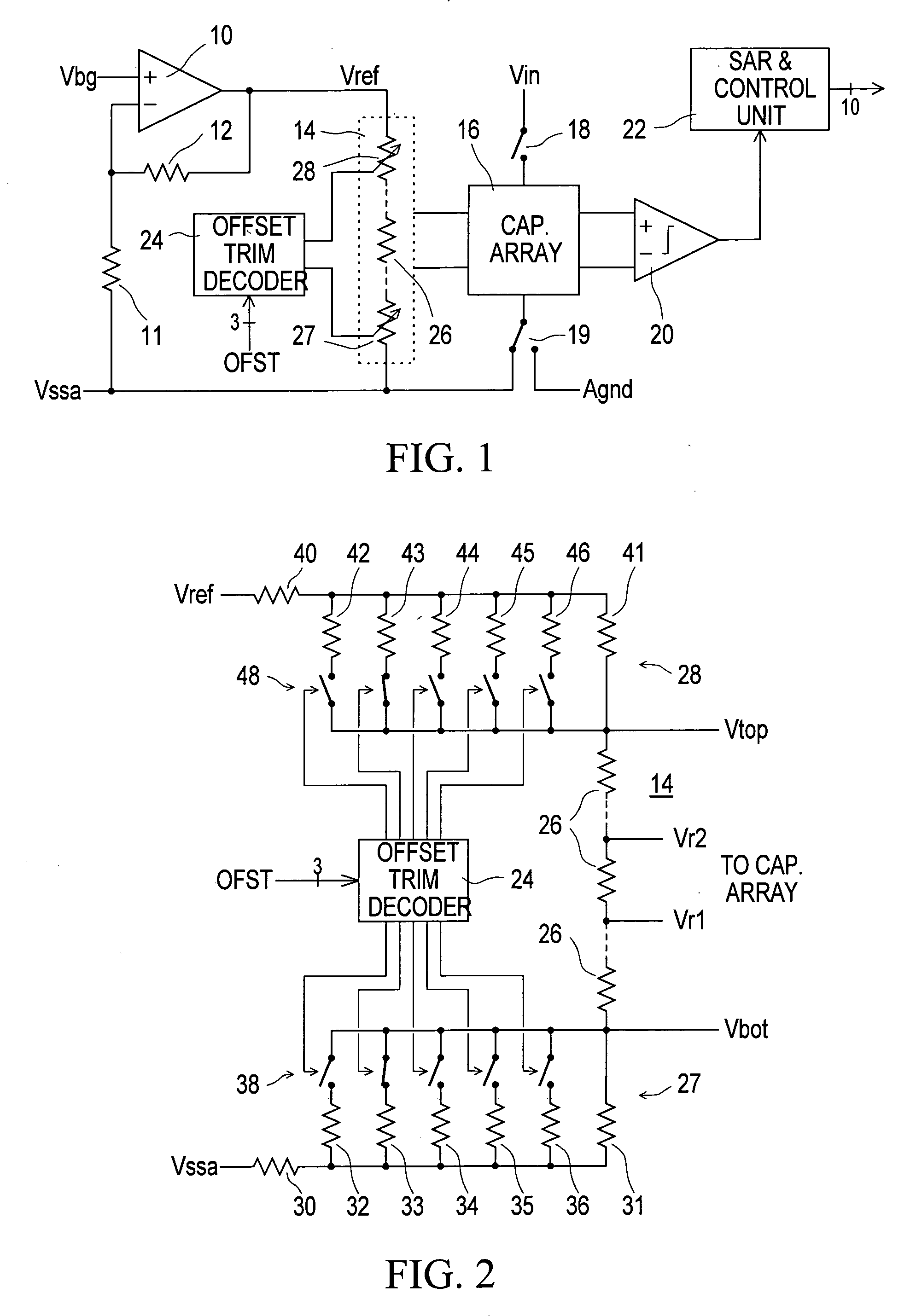Trimming resistance ladders in analog-digital converters
a technology of resistance ladders and analog-digital converters, which is applied in the direction of transmission systems, instruments, electrical apparatus, etc., can solve the problems of inability to obtain inability to achieve the required absolute performance, and inability to offset in the region of 0v
- Summary
- Abstract
- Description
- Claims
- Application Information
AI Technical Summary
Benefits of technology
Problems solved by technology
Method used
Image
Examples
Embodiment Construction
[0021] Referring to the drawings, FIG. 1 illustrates a block diagram of a 10-bit coarse-fine successive approximation ADC (analog-to-digital converter) using a resistance ladder or chain for the coarse stage and a capacitance ladder or array for the fine stage, and shows how an embodiment of the invention is applied to the ADC, the general form of which is known for example from the book by R. Gregorian referred to above.
[0022] More particularly, as shown in FIG. 1 the ADC comprises a source of a reference voltage Vref, constituted in this example by a differential amplifier 10 and resistors 11 and 12; a resistance ladder or chain 14, shown within a dashed line box; a capacitance ladder or array 16 and associated switches of which only two switches 18 and 19 are shown; a comparator 20; and a 10-bit SAR (successive approximation register) and control unit 22. The control unit 22 serves in a known manner to control the ADC and its switches to implement binary search and successive ap...
PUM
 Login to View More
Login to View More Abstract
Description
Claims
Application Information
 Login to View More
Login to View More - R&D
- Intellectual Property
- Life Sciences
- Materials
- Tech Scout
- Unparalleled Data Quality
- Higher Quality Content
- 60% Fewer Hallucinations
Browse by: Latest US Patents, China's latest patents, Technical Efficacy Thesaurus, Application Domain, Technology Topic, Popular Technical Reports.
© 2025 PatSnap. All rights reserved.Legal|Privacy policy|Modern Slavery Act Transparency Statement|Sitemap|About US| Contact US: help@patsnap.com


